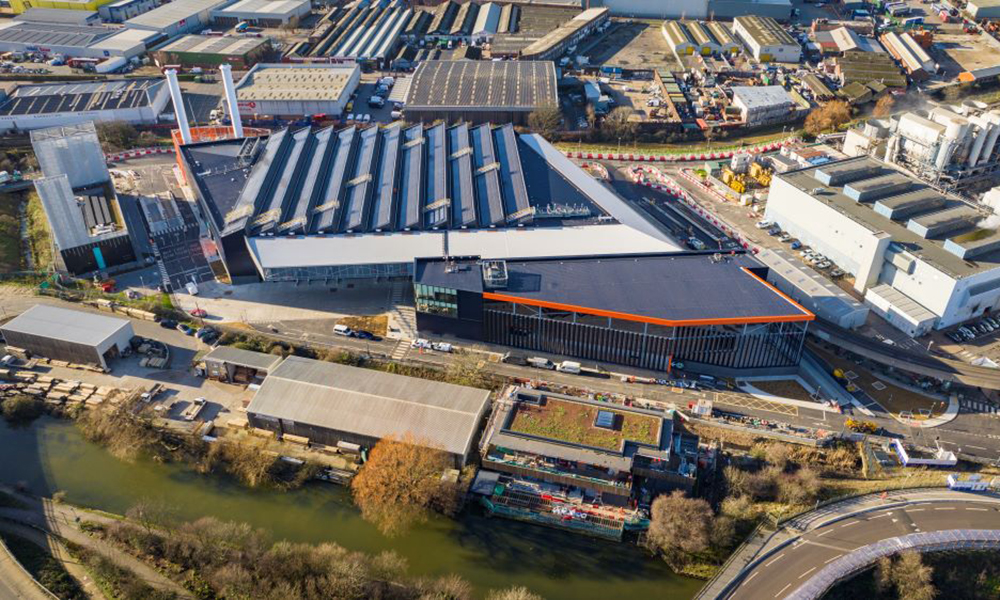
A railway running through the forests of west Germany is seeing a very unusual sight at the moment – as a Piccadilly line tube train is running through the area.
What is a Piccadilly line train doing in Germany?
It’s the first of 94 new Piccadilly line trains which will be carrying passengers in 2025, but before that, they need intensive testing before arriving in London, and Siemens Mobility owns one of the world’s largest train testing centres, built on a former RAF base in west Germany.
The new trains are very different to the ones they will replace, with a new lightweight design and plenty of internal improvements. The change that most people will be excited about though is that it will also be the first deep level trains to come with air conditioning.
To fit air conditioning into the trains has been a challenge, and one that’s far more visible than it might seem at first glance.
Officially known as the New Tube for London, the first trains have been ordered for the Piccadilly line, with the intention that, funding permitting, modified versions will also be used on the Bakerloo and Central lines in the future.
The reason London needs new trains is that while the average age of mainline trains in the UK is just 17 years, the Piccadilly line trains are 48 years old, and the Bakerloo line trains are even older, having hit their half-century last year. There’s a need to replace the trains as reliability declines and maintenance costs increase, so in 2018, Siemens Mobility won the contract to supply up to 250 new trains.
An initial 94 trains are on order, with options to buy more in the future. The first batches are being built by Siemens in their Austria factory, but production will soon switch to a new factory at Goole in Yorkshire, where the majority of the trains will be constructed.
There have been a lot of changes in mainline train technology over recent decades, but the challenge that was pointed out was how to fit as many of those improvements into a small tube train. What Siemens has developed is a fully walkthrough train that can carry about 10 percent more people than the current trains, with wider doors, improved information screens and most significantly, air conditioning.
To nip one argument in the bud, the trains will uses vapour-compression refrigeration with temperature control but without the humidity control that is typically provided in buildings. Strictly speaking this is an “air cooling” system, however this type of system is widely referred to as an “air conditioning” system when referring to trains and other mobile applications such as cars. And lets be honest, everyone is going to call it air conditioning anyway, so lets not get hung up on technicalities.
The main problem with putting air conditioning in the deep tunnel trains is the lack of anywhere for the heat to go – as the tunnels themselves can’t absorb the heat expelled from the trains.
The solution has taken advantage of an innovative train design, reducing the heat they emit from the engines and brakes. Cooler running trains could help to cool the tunnels, but it would take decades to notice the difference, or they can use that temperature gap between the new and old trains to put air conditioning inside the carriages today.
In effect, the new trains, with air conditioning, will run at about the same temperature as the old trains — but will be considerably more comfortable for passengers.
If a future plan to run even more trains through the tunnels goes ahead, that will require increased cooling in the stations, which, funding permitting, is being developed at the moment.
To fit air conditioning into the trains has been rather an interesting challenge, as air conditioning units are large and tube trains are small, and Siemens Mobility has taken several ideas and put them together to create the space needed. One of the most noticeable, for train geeks at least, is the design of the bogies underneath the trains — the wheels, which have been reduced thanks to the use of walk-through articulated train carriages.
Tall people will also notice a difference, as they’ve managed to squeeze out a few more inches in height inside the carriages, which was noticeable even to this 6ft tall person.
Fewer bogies mean less weight and less energy needed to move the train and a bit more space underneath the train for extra equipment. The air conditioning units themselves slot in underneath the seats, where you might notice the air intake vents with a recessed tube roundel in the middle.
The most significant visual change though is in the windows, as Siemens needed more vertical space for cabling and ducts than could be squeezed in beside the door frames. That’s why instead of two large windows, there are three smaller windows — as the gaps between the windows carry cables and also the cooled air up to the ceiling.
The slightly smaller windows don’t make the trains darker though, as the trains are fitted with modern LED lights, including some very fetching art-deco inspired light rings above the gangway poles.

Another design change is the moquette.
A brand new moquette, called Holden, after the legendary architect Charles Holden, which includes several nods to Picadilly line heritage, most noticeably the design of Southgate station in north London.
You’ll be able to sit on the Holden moquette seat in an air conditioned train in 2025.
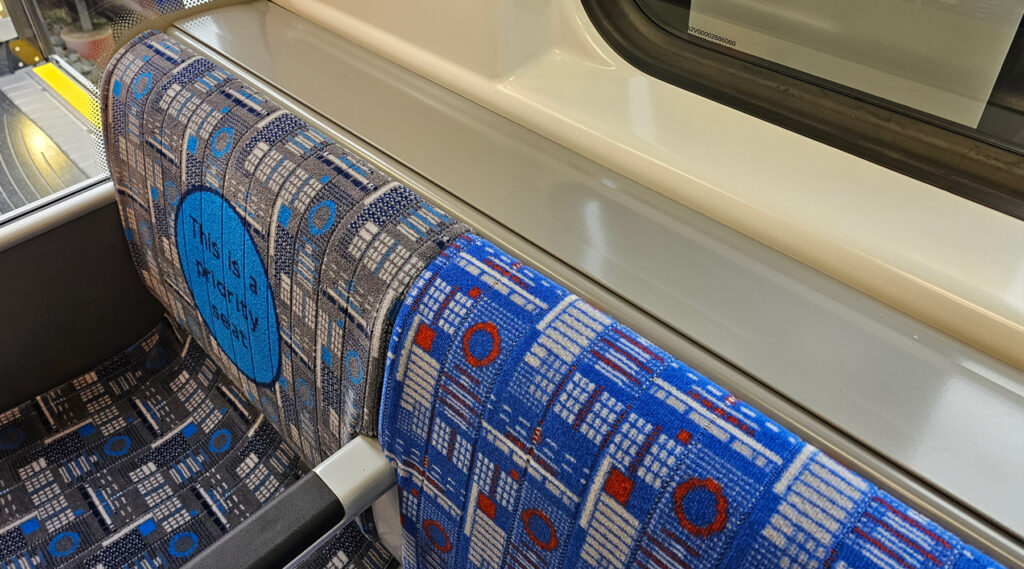
But before that, the trains need to be certified for use, which requires a lot of testing, and that’s why there’s a Piccadilly line train in Germany at the moment.
It’s at the former British military base, RAF Wildenrath, which closed at the end of the Cold War, and is now the Wegberg-Wildenrath Test and Validation Centre used by Siemens to put trains through their paces. After an hour’s drive from Dusseldorf and down an inconspicuous road, you can find yourself driving past rows upon rows of mainland Europe sized trains brought here for testing.
Thameslink trains were also tested here, along with several other liveries familiar to British eyes, and now, dwarfed by its bigger European brothers, is a Piccadilly line train.
To show off what the new train looks like, Siemens Mobility invited rail journalists to have a ride, so although mostly filled with test equipment, one carriage was fitted out for visitors to see what the new trains look and feel like to ride in.
The interior looks very much like the final trains, although there are still a few modest tweaks to the design expected as London Underground staff notice snagging issues or ask for changes based on experiences of how Londoners behave in trains. However, as most of those will be imperceptible to the average person, what we’re seeing today is 99.9% of what the travelling public will see in 2025.
The seats will probably get a lot of comments when the trains come into service as they are very different from the existing Piccadilly line trains. The new seats can be described as closer to the DLR in padding, while the existing seats are now so saggy after decades of use that they feel like they’re missing half their springs. So even though the new seat padding levels are in use on loads of other London trains, I’d expect a bit of a reaction when the trains come into service. Personally, I prefer the new seats.
Alongside the internal digital display screens, external displays between the doors will show the train destination and other helpful information.

While the visitors were in the front carriage getting cab rides through the German countryside, engineers were still at work in the rest of the train monitoring their test equipment and sensors. The tests aim to prove that the trains run as expected, prove reliability and iron out any bugs before they go into full production in Yorkshire.
Once the train has been certified, it then has to come to London, where it will be used for extensive tests on the live Picadilly line and build up the mileage to get UK authorisation to carry passengers. The train is expected to arrive next summer, when you will start to see it out and about on the Piccadilly line – initially overnight and during engineering closures, but later during the daytime.
Only then can it start to carry passengers – in early 2025.
As the trains have much wider doors than the current trains, they can spend less time in stations picking up and dropping off passengers, and with 94 new trains replacing 86 old trains, TfL expects that to enable them to increase peak capability on the Piccadilly line from 24 to 27 trains per hour from 2027.
However, that is only the beginning.
Along with the 10 per cent additional space inside the trains and more trains per hour, the net effect is a capacity increase of around a quarter on the Piccadilly line compared to today. There is also a — currently on hold — plan to upgrade the signalling system on the Piccadilly line, increasing capacity from 27 to 36 trains per hour.
While the Piccadilly line trains are heading to London, there’s an option to replace the trains on the Bakerloo and Central lines, but that option expires in late 2026, and TfL has to be in a position to place the order by then otherwise the option lapses and would need to be renegotiated, likely at a higher price.
Companies like options in contracts as they give both buyers and sellers assurance about their intentions and support investment by both parties.
Speaking at the trials last week, Stuart Harvey, TfL’s Chief Capital Officer, confirmed that discussions are still ongoing about long term investment to replace the Bakerloo line trains, which are now the oldest electric passenger trains in service in the UK.
Although the option to buy the trains could be taken in 2026, realistically, it needs to be sooner.
When buying new trains, you don’t just order trains, and that’s it — over the past 50 years since the Bakerloo lines were introduced, the technological improvements in rolling stock mean that 50 year old track equipment can’t offer the benefits needed. So that needs replacing, and they’re likely to need a new depot to store the extra trains, and all that takes years to arrange.
The key message from both TfL and Siemens is that a decision on the Bakerloo line is needed fairly soon. Even if taken immediately, it’s quite possible that people born when the Bakerloo line trains were introduced will have retired from work before the first of the new trains arrives. Which is an heck of a long time to keep trains in use.
In the meantime, as we headed home, the Siemens engineers continued their tests as a Piccadilly line train resumed its loops through the German forest.
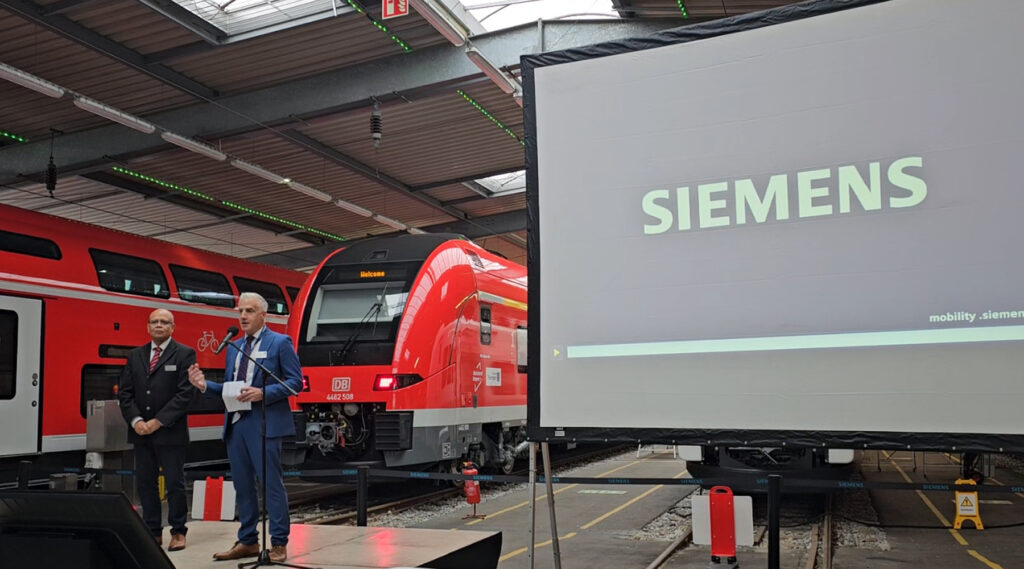
Sambit Banerjee, Joint CEO for Siemens Mobility UKI and Stuart Harvey, TfL’s Chief Capital Officer
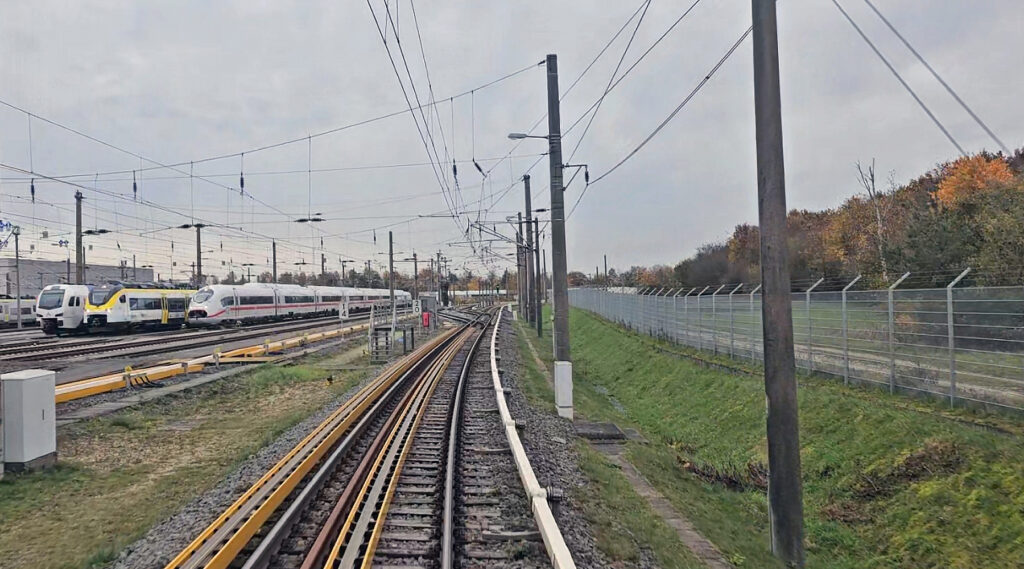
An unusual view from the front of a Piccadilly line train


Inside the new trains
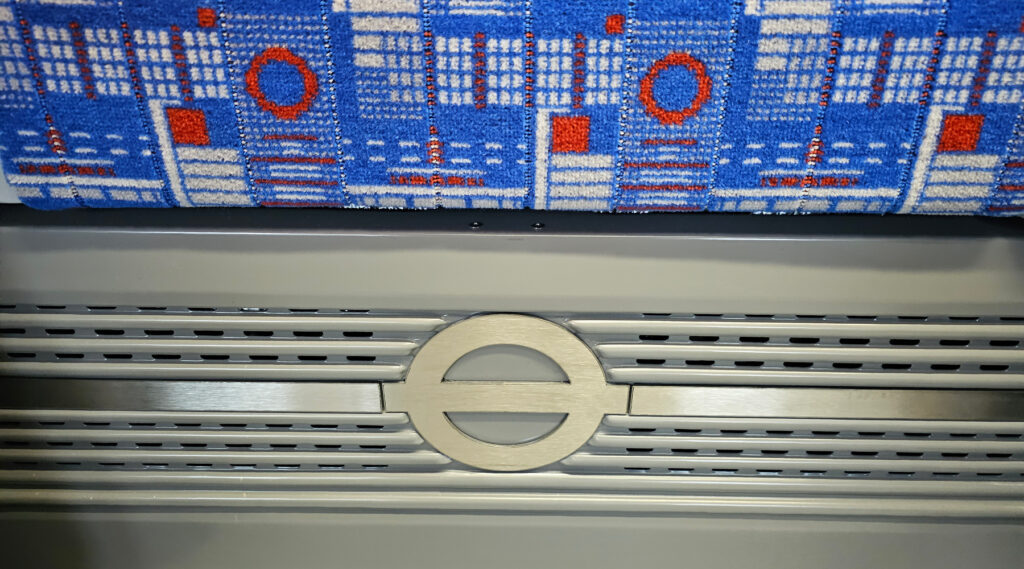
Seating above air conditioning vents

The train in test mode in the German countryside.
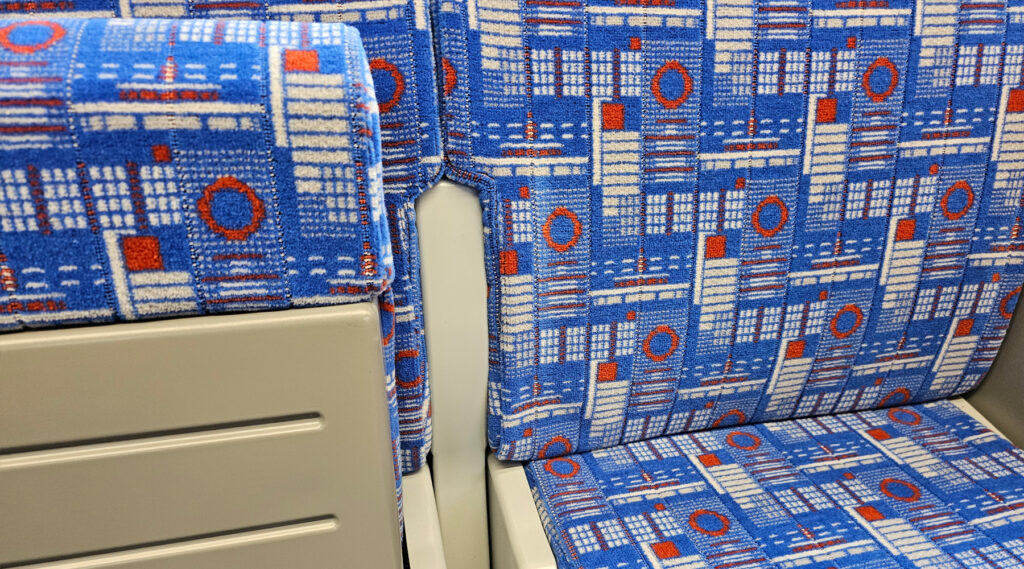
Close up of the moquette

The drivers cab
https://www.ianvisits.co.uk/articles/cool-commutes-ahead-inside-look-at-londons-new-piccadilly-line-trains-undergo-testing-in-germany-67513/

